Cured In Place Pipe Lining Method
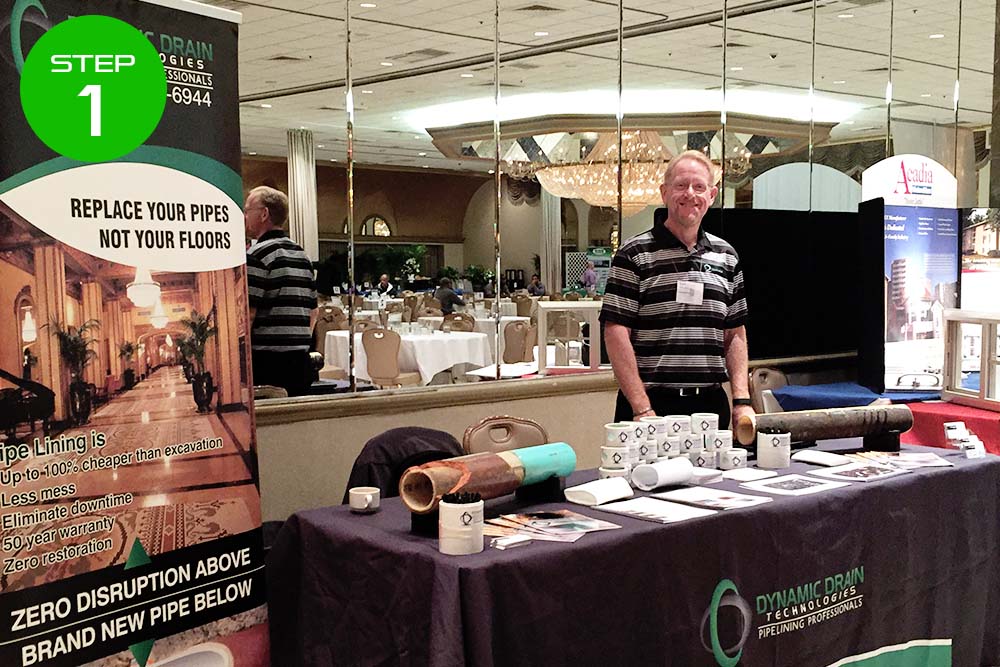
Step 1: Initial Site Visit & Discovery Consultation:
Highly trained members of our business development and estimating departments are dispatched to meet and collect any and all discovery information pertaining to your project. Our business development team will also share project profiles and references and educate you on our Turn Key Zero Dig Sewer and Drain Technologies.
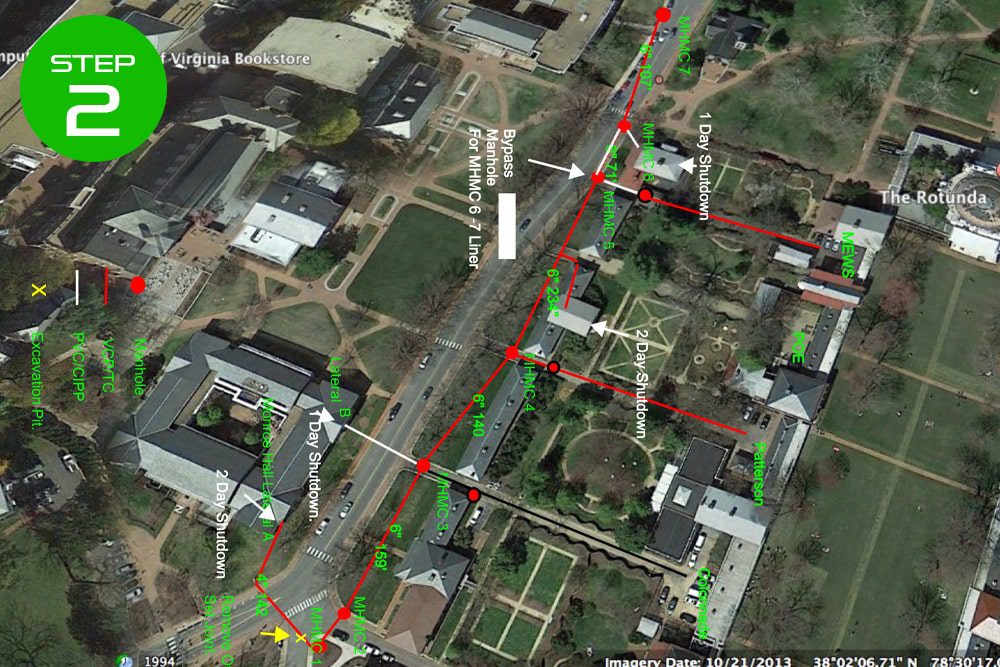
Step 2: Develop (CIPP) Rehab Recommendations, Plans, Goals & Budget Considerations:
After concluding step 1, our development team enters and organizes all information into our (CRM) or Customer Relationship Management System. Once this step is complete all interested parties can view, collaborate, comment, and track a potential project as we create and present recommendations, goals, budgets, and action plans.

Step 3: Pipeline Assessment Services or (CIPP) Design Basis:
Step 3 is designed to offer our clients a transparent budget controlled product mix of potential solutions and services. Pipe Line Assessments or Infrastructure Intelligence Studies allow clients with larger or more complex sets of pipeline infrastructure to categorize and prioritize the repair of pipeline assets by current conditional severity.
CIPP Design Basis or as we call it "Design to Re-Line Process" places a small 2-3 person reconnaissance team of CIPP design specialists and project managers to draft and design a turnkey and fully transparent CIPP lining project. This process includes fully digitized rehab plans, design calculations, schedules, & approximate unit price points.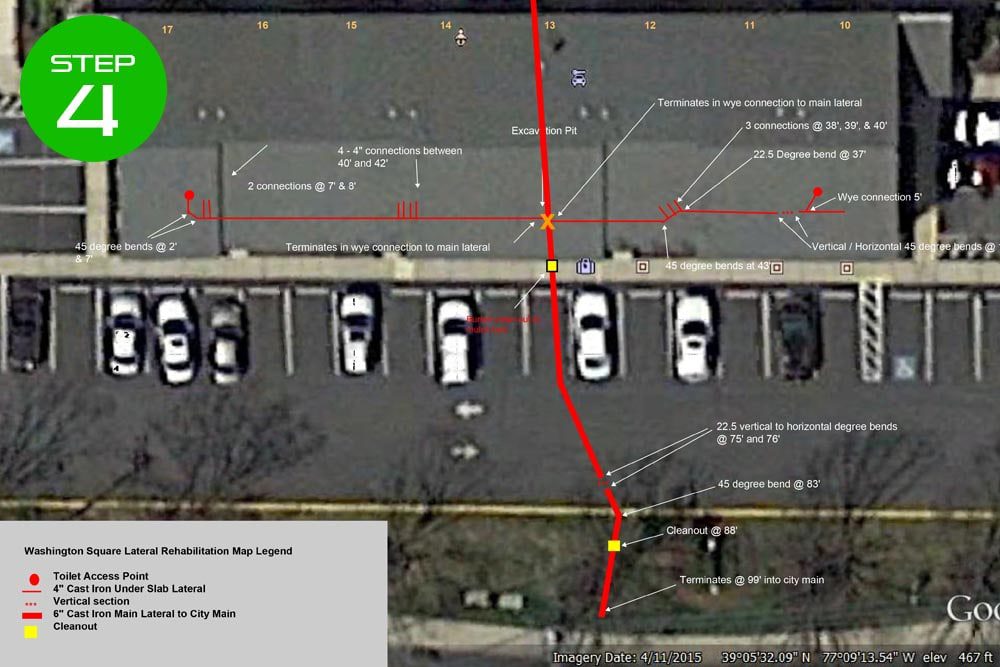
Step 4: Project Planning, Implementation, & Management:
Step 4 is always the most important! Pipe lining projects are 75% communication and 25% field activities. Every project, no matter the size, is assigned a team of 3-6 CIPP field technicians, 1 superintendent and 1 full-time project manager. All projects are loaded into our CRM system and updated daily for real time project tracking.
Step 5: Pipe Cleaning & Video Inspection:
Step 5 is all about the tools and technologies. We utilize the industries most advanced pipe cleaning and inspection technologies. By design, each pipe segment is thoroughly cleaned and verified by recording via full-color video pipe inspections.
Step 6: (CIPP) Liner Material Fabrication:
During the video pipe inspections, skilled technicians observe size and construction details of the pipeline that are in turn used to fabricate the raw lining materials that will be used on each pipeline. Liner materials can be fabricated onsite for quick installation. Our liner materials can make several 90-degree bends and can make transitions in pipe diameter.
Step 7: Installation (CIPP) Liner:
Step 5 is all about the tools and technologies. We utilize the industries most advanced pipe cleaning and inspection technologies. By design, each pipe segment is thoroughly cleaned and verified by recording via full-color video pipe inspections.
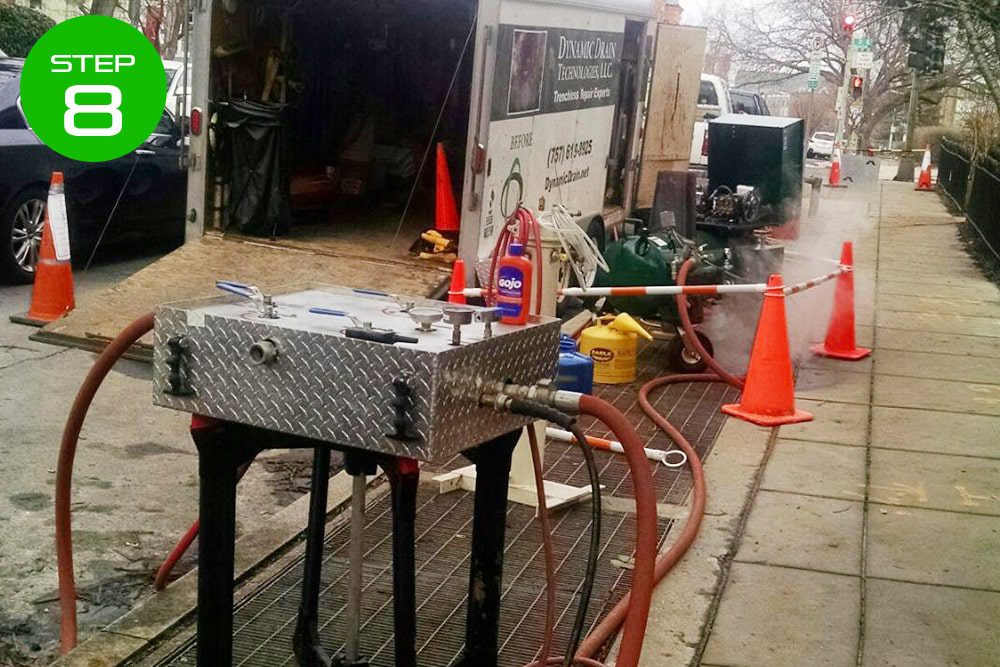
Step 8: Curing of the (CIPP) Liner:
After the liner has been installed it can then be cured using 3 different methods: ambient air, forced steam, or recirculated hot water. Cure times can be as quick as 30 minutes or as lengthy as 5 plus hours.
Step 9: Robotic Reinstatement of Lateral Service Connections:
Once the proper cure schedule has been achieved and verified by video pipe inspection the re-opening of any cross pipe connection or lateral service connections can be done. We currently employ 5 different robotic and mechanical reinstatement cutters which allows us to return pipelines to service each day during normal operations.
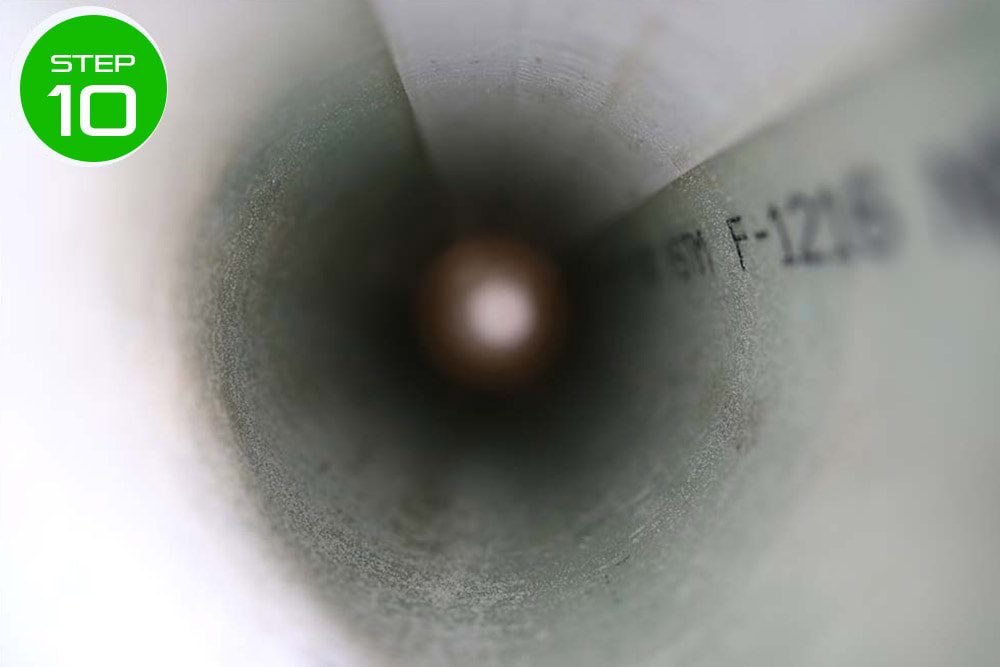
Step 10: Post Liner Inspection and Final (CIPP) Rehab Submittals:
After the completion of each rehabilitated pipe segment a post liner video pipe inspection is conducted and archived by title along with its pre-liner video inspection. All pre and post liner videos are filed digitally with installation field sheets, cure schedules, and third party testing results. This data submittal is shared via Dropbox and concludes the lining process.
